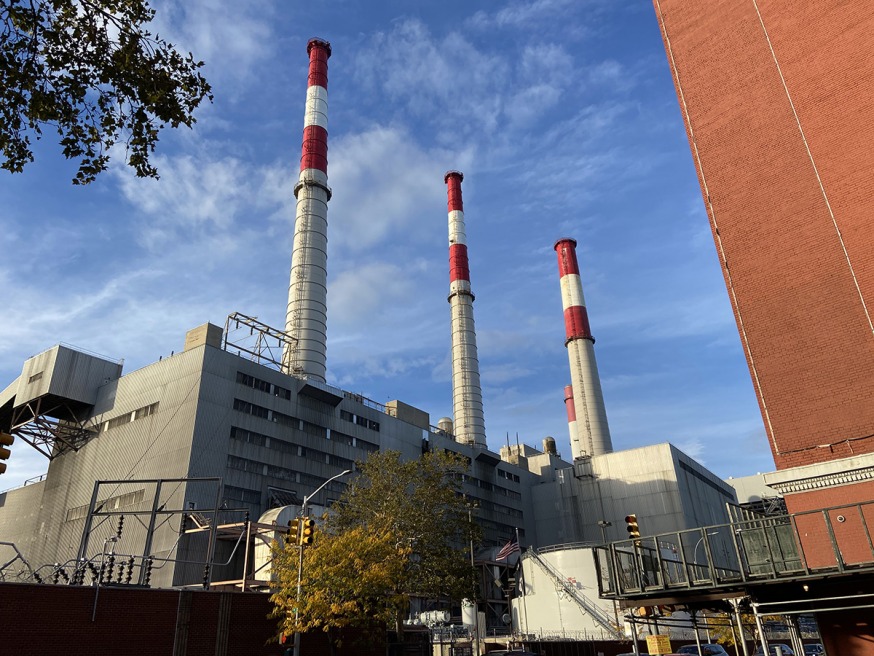
Ravenswood Generating Station (Photo: Ta’Leah Van Sistine)
Mar. 19, 2024 By Athena Dawson
The owners of the Ravenswood Generating Station in Long Island City are transitioning the fossil fuel powered plant to a green energy hub and the Queens Borough President announced Monday the launch of a community-centered planning study to determine what benefits the new hub can bring to residents of the area.
Ravenswood Generating Station, which is New York’s largest power plant and is known for its smokestacks, is located on the East River and sits across from NYCHA Queensbridge and Ravenswood Houses. The plant, which is powered by oil and gas, has served New York for over 60 years and generates over 20% of the city’s electricity. Rise Light and Power, the owner of the powerplant, plans to convert the fossil fuel powered plant into a clean energy hub dubbed Renewable Ravenswood.
Borough President Richards is partnering with Rise Light and Power to complete the Reimagine Ravenswood Just Transition Site Reuse Planning Study. The study will be conducted by HR&A Advisors, a consulting firm, and partially funded by Rise Light and Power.
The planning study in relation to the Renewable Ravenswood project will evaluate the economic benefits that the project—and Rise Light and Power—can bring to the neighborhood, as well as where new jobs can be added. HR&A will meet with residents and stakeholders to get feedback as to their vision for the site.
The plan will look at ways to help the public housing community through the creation of green energy jobs, as well as expanding public waterfront access. Richards placed an emphasis on bringing jobs and investment dollars to residents in western Queens, especially those who live at Queensbridge and Ravenswood Houses.
“The days of environmental and economic injustice in western Queens, especially for our historically marginalized public housing families, are coming to an end. As we prepare to transform the Ravenswood Generating Station into a clean energy producer, it’s critical that the surrounding community reaps the benefits of that transition,” said Richards. He added that he hopes that everyone will “make their voices heard in the coming months ahead.”
The first step of the study will involve the creation of a project committee, which will consist of the borough president’s staff, public housing tenant leaders, city agency reps and community organizations.
Western Queens residents will be able to give their input on the future of the station at a public meeting scheduled for Monday, March 25 at 6:30pm. The meeting will be at NYCHA Queensbridge Houses’ Jacob A. Riis Neighborhood Settlement, located at 10-25 41st Ave. in Long Island City. After a series of meetings, residents will be able to partake in a survey, with a final action plan this summer.
New York State Energy and Research Development Authority (NYSERDA) has already given Rise Light and Power the greenlight to phase out the oil and gas-fueled generators and replace them with offshore wind provided by Attentive Energy One. Attentive Energy One is one of three off-shore wind energy projects, which are part of Gov. Kathy Hochul’s large scale investment in renewable energy–the largest state investment in renewable energy in United States history.
Richards’ office was awarded funding for the study through NYSERDA’s Just Transition Site Reuse Planning Program, a program that addresses the impact of fossil fuel power plant shutdowns. The program is part of New York State’s transition to 100% zero emission electricity by 2040, as required by the Climate Leadership and Community Protection Act
